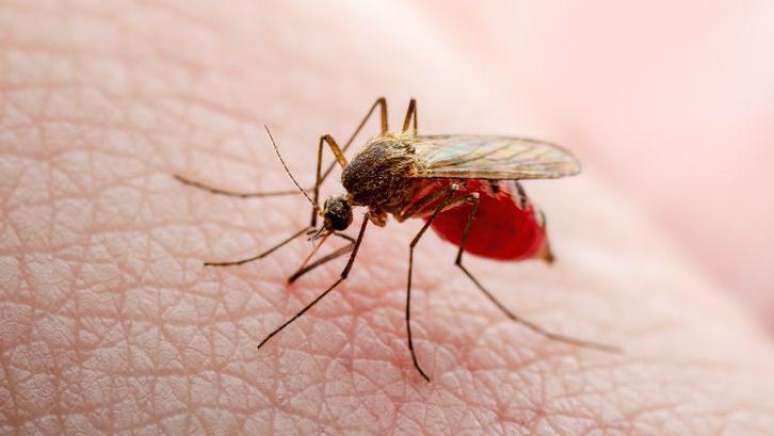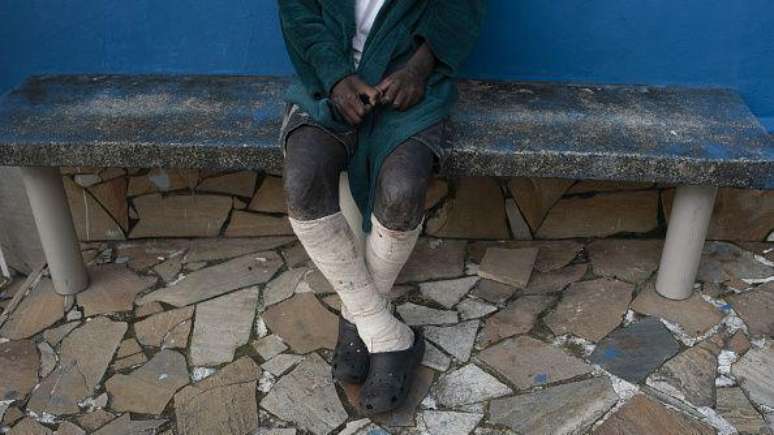Schistosomiasis, leprosy, human rabies and other health problems can affect nearly 15% of the population, but receive little attention and investment. A new national plan aims to eliminate or control most of these conditions.
Every year, 28.9 million Brazilians are at risk of suffering from one of the neglected tropical diseases that still plague the country. This represents 14% of the total population.
This estimate practically doubled in the period between 2016 and 2020: until 2015 it was believed that these health problems could affect around 15 million people (equal to 7.3% of the population).
These are some of the data that appear in an epidemiological bulletin published by the Ministry of Health at the end of January.
Among the diseases that appear on the list, some have diagnoses and treatments available for years in the public network, such as leprosy and trachoma.
Others are directly linked to poor housing conditions or lack of basic sanitation and access to drinking water, cases of schistosomiasis and lymphatic filariasis.
As the 2022 census showed, 49 million Brazilians (24% of the population) still live in homes without adequate wastewater disposal, 18 million (9%) have no waste collection, 6 million (3%) they do not have an adequate water supply and 1.2 million (0.6%) do not have a bathroom or even a toilet.
There are some diseases that spread practically across the entire national territory, such as snake bite, and others that are limited to very few municipalities, such as human rabies.
In an editorial recently published in an academic publication, representatives of the Ministry of Health admitted that the existence of these diseases in the country – and the fact that they mainly affect socially vulnerable populations – “shames us as a nation”.
But a project launched by the federal government in recent weeks promises to eliminate or control many of these diseases.
Forgotten problems
In general, tropical diseases are defined as those that occur in the tropics or warmer regions of the planet.
Although the concept is a bit imprecise (some of these diseases also appear in temperate zones, for example), it is traditionally used to bring together a number of different conditions, ranging from malaria and dengue to dracunculiasis and deep-seated mycoses.
But when can a tropical disease be considered neglected?
“These are conditions in which major investments are not made, especially regarding technological innovation and the discovery of new medicines, vaccines or diagnostic tests”, says infectious disease specialist Julio Croda, of the Oswaldo Cruz Foundation (Fiocruz).
These diseases are often also linked to poverty and are “forgotten” from the point of view of public authorities. In general, there are no prevention, early diagnosis or treatment programs.
“We talk about neglected diseases, but the right thing would be to talk about diseases that affect neglected populations,” says Croda, who is also a professor at the Federal University of Mato Grosso do Sul.
“This is because they are associated with social and economic inequalities, which also lead to the pharmaceutical industry’s lack of interest in producing innovations, since from a financial point of view it is not a profitable market.”

The World Health Organization (WHO) estimates that neglected tropical diseases affect 1.7 billion people on the planet and are linked to 200,000 deaths each year.
The organization highlights that, in addition to healthcare costs and lost productivity, these diseases “are responsible for other consequences, such as disability, stigmatization, social exclusion and discrimination, which place considerable pressure on patients and their families.”
The WHO includes 25 different conditions in the list of neglected tropical diseases.
Of these, ten are cited directly in the latest epidemiological bulletin of the Ministry of Health on the subject.
Most of them are caused by worms, protozoa, bacteria or viruses.
“Trachoma, for example, has a simple diagnosis and treatment, which is based on a single dose of antibiotics. It is not possible that there are still cases of Brazilians going blind due to this infection,” says Croda.
Duplicate vulnerabilities
The number of Brazilians at risk each year, which refers to the period from 2016 to 2020, has practically doubled compared to the estimate for 2015.
But what explains such a huge leap?
For Dr. André Siqueira, of the Evandro Chagas National Institute of Infectious Diseases (INI-Fiocruz), there is no single factor behind this increase.
“First, we have improved detection and information systems, which allow us to know the scenarios in which people are most exposed,” he says.
In other words, previously, when the real situation of these diseases was not even known with certainty: number of cases and deaths, places with the greatest transmission, etc. — it was even more difficult to estimate their impact on the population.
“Secondly, there are conditions that can favor the onset of these diseases,” says the specialist, vice president of the Brazilian Society of Tropical Medicine.
Among these conditions, the impact of climate change cannot be ignored.
The average increase in the planet’s temperature favors the spread of insects that transmit diseases, such as leishmaniasis.
Although it doesn’t appear on Brazil’s list of neglected diseases, the heat also spells good news for the mosquito responsible for dengue, zika and chikungunya: Aedes a Egypti.
Epidemiologist Ethel Maciel, undersecretary of Health and Environmental Surveillance at the Ministry of Health, also cites two other elements that help to understand this scenario.
“The increase in poverty we have experienced in recent years in Brazil has also had an impact on these numbers,” Maciel says.
“In the Amazon we have had recent droughts, which have left many populations without healthcare, because there are places where you can only get there by boat.”
The expert also underlines that illegal mining “has limited or hindered access to water and food in the Yanomami territory and in many other regions”.

How to solve this problem?
To address neglected diseases and other health problems, the federal government announced the Brasil Saudável program in early February.
After the launch of the project, in which the biologist Tedros Adhanom Ghebreyesus, director general of the WHO, participated, Brazil became the first country in the world to launch a policy that aims to eliminate or reduce the impact of 14 diseases or infections that they have a social component, linked to poverty or vulnerable populations.
Healthy Brazil aims to eradicate diseases such as malaria, Chagas, trachoma, filariasis, schistosomiasis, onchocerciasis and some intestinal worms by 2030.
Additionally, there are goals to reduce cases of tuberculosis, HIV, leprosy and viral hepatitis – and to end vertical transmission (when the infectious agent passes from mother to baby during pregnancy, birth or breastfeeding) of HIV, syphilis, hepatitis B, Chagas and HTLV.
Brasil Saudável is led by the Ministry of Health, but counts on the participation of 14 ministries gathered in a committee, because many of the actions concern not only the provision of medical services, but also issues related to basic sanitation, housing and fight against poverty.
“We need the Ministry of Justice, because some diseases are concentrated in the prison system. We need the Ministry of Indigenous Peoples, because some of these populations are more affected by certain conditions. We need the Ministry of Racial Equality, because some of the diseases they disproportionately affect the black population. And so on,” explains Maciel.
“Brazil can be a protagonist in the fight against many of these diseases.”
Some of the overlooked problems that appear in the epidemiological bulletin are already very close to becoming a thing of the past.
This is the case of lymphatic filariasis, also called elephantiasis. Brazil has had few outbreaks, in the cities of Pernambuco, and has recorded no cases in recent years.
As a result, at the end of last year, health authorities created a dossier asking the Pan American Health Organization (PAHO), the arm of the WHO in the Americas, to grant the country a certificate of elimination of this verminosis.
Maciel hopes that the Ministry of Health can make a similar request regarding onchocerciasis and trachoma in 2024, so that these pathologies will also be officially off the Brazilian map.

Siqueira believes that eliminating a disease does not mean the story is over.
“Yes, eliminating these diseases is possible, and our country has already done so on other occasions. But the fragility of local health systems can cause their return”, he notes.
“For many of them we need joint strategies that go beyond the health sector and are linked to better living and housing conditions.”
Croda also welcomes the government’s initiative and draws attention to the need for investments.
“It is important that there is the political will to eliminate these diseases, but we need to go further,” he underlines.
“We need investment in research and development, because there is no interest from the pharmaceutical industry in creating treatments, vaccines or diagnostic tests for these conditions.”
The infectious disease specialist recalls that a few years ago there were great difficulties in obtaining tests to detect Chagas disease, and the situation only changed when public authorities decided that Brazil would lead the search for tests.
“Without investments dedicated to this purpose we will not be able to achieve the elimination objectives”, warns Croda.
Maciel points out that there will be funding for the project and the amounts will be higher than what is historically spent on neglected diseases.
“Also, the New CAP [Programa de Aceleração do Crescimento] It also addresses health gaps, with particular attention to the North, North-East and Central-West, where many of these pathologies are more concentrated”.
Source: Terra
Ben Stock is a lifestyle journalist and author at Gossipify. He writes about topics such as health, wellness, travel, food and home decor. He provides practical advice and inspiration to improve well-being, keeps readers up to date with latest lifestyle news and trends, known for his engaging writing style, in-depth analysis and unique perspectives.









